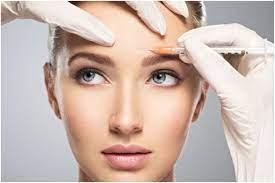Forehead wrinkles are one of the most common signs of aging — and one of the first areas people notice when lines start to set in. Fortunately, Botox in Islamabad has become a trusted, effective solution for smoothing out forehead lines and achieving a youthful, refreshed look. Whether you’re considering Botox for the first time or you’re curious about how it works specifically for forehead wrinkles, this guide covers everything you need to know.
Why Do Forehead Wrinkles Form?
Forehead wrinkles, also known as horizontal forehead lines, form over time due to a combination of factors:
- Facial Expressions: Every time you raise your eyebrows — whether you’re surprised, worried, or concentrating — the frontalis muscle contracts, creating folds in the skin. Over time, these folds become more permanent.
- Aging: As we age, collagen and elastin production slows down. These proteins are responsible for keeping skin smooth and resilient, and without them, wrinkles become more noticeable.
- Sun Damage: UV exposure breaks down collagen and accelerates skin aging, contributing to deeper forehead lines.
- Genetics: Some people are simply more prone to developing forehead wrinkles based on their genetic makeup.
How Does Botox Work on Forehead Wrinkles?
Botox, short for Botulinum toxin, works by temporarily relaxing the muscles responsible for creating wrinkles. When injected into the forehead, it targets the frontalis muscle — the one that lifts your eyebrows — to prevent it from contracting too much. This softens existing lines and helps prevent new ones from forming.
It’s important to note that Botox doesn’t fill wrinkles; it simply relaxes the muscle underneath. This makes it an excellent option for dynamic wrinkles — those caused by movement — rather than static wrinkles, which are visible even when your face is at rest (though Botox can still soften these over time).
What to Expect During the Procedure
One of the biggest advantages of Botox for forehead wrinkles is how quick and straightforward the treatment is. Here’s a step-by-step breakdown:
1. Consultation
Your practitioner will assess your forehead, discuss your goals, and determine how many units of Botox you’ll need. On average, treating the forehead requires 10-20 units, but this varies based on individual factors like muscle strength and wrinkle severity.
2. Preparation
The treatment area is cleansed, and in some cases, a numbing cream may be applied — though most people find the injections tolerable without it.
3. Injections
The practitioner uses a fine needle to inject small amounts of Botox into precise points across the forehead. The procedure typically takes 10-15 minutes.
4. Aftercare
There’s no downtime required, but you’ll need to avoid touching your forehead, lying down, or exercising for 4-6 hours to prevent the Botox from migrating to other areas.
How Long Do Results Take?
Botox doesn’t deliver instant results — but you won’t have to wait long. Most people start noticing improvements within 3-5 days, with full results visible after 7-14 days.
The smoother, more youthful look typically lasts 3-4 months, though this varies depending on factors like metabolism, muscle strength, and how many units were used. Regular maintenance appointments can help prolong the effects.
How Many Units of Botox Do You Need for the Forehead?
The number of Botox units required for forehead wrinkles varies from person to person. However, here’s a general breakdown:
- Horizontal forehead lines: 10-20 units
- Glabellar lines (the "11s" between the eyebrows): 15-25 units
A skilled practitioner will customize the dose to your unique needs — using enough to relax the wrinkles without making your face look unnatural or frozen.
Potential Side Effects and Risks
Botox is FDA-approved and considered very safe when administered by a qualified professional. However, like any cosmetic treatment, it comes with some potential side effects:
- Mild bruising or redness at the injection sites
- Temporary headache (usually resolves within 24 hours)
- Droopy eyelids or eyebrows — this is rare and typically the result of improper injection placement or product migration
- Uneven results if the Botox is distributed unevenly
Choosing an experienced injector is key to minimizing risks and ensuring natural-looking, balanced results.
Who Is a Good Candidate for Botox on the Forehead?
Botox is suitable for most healthy adults who want to soften forehead lines. You’re a good candidate if:
- You have moderate to severe forehead wrinkles
- You want preventative treatment to stop wrinkles from getting deeper
- You’re in good overall health and not pregnant or breastfeeding
- You have realistic expectations — Botox reduces wrinkles but won’t completely transform your face
Alternatives to Botox for Forehead Wrinkles
If you’re not sure Botox is right for you, there are other options to consider:
- Dermal fillers: These plump up deeper, static wrinkles that Botox can’t fully treat.
- Chemical peels: Help improve skin texture and boost collagen production.
- Microneedling: Stimulates collagen and can improve the appearance of fine lines over time.
- Laser treatments: Target wrinkles, sun damage, and skin laxity.
Each approach has its pros and cons — a consultation with an expert can help you determine the best solution for your specific goals.
Why Choose a Professional for Botox in Islamabad?
Forehead Botox may sound simple, but achieving smooth, natural-looking results requires skill and precision. An experienced injector understands facial anatomy, knows how much Botox to use, and places the product strategically to avoid over-relaxation, drooping, or unevenness.
If you’re considering Botox in Islamabad, Dynamic Clinic offers expert practitioners, personalized care, and a commitment to delivering safe, natural-looking results. Book your consultation today to achieve a smoother, more youthful forehead — and confidence that lasts.

